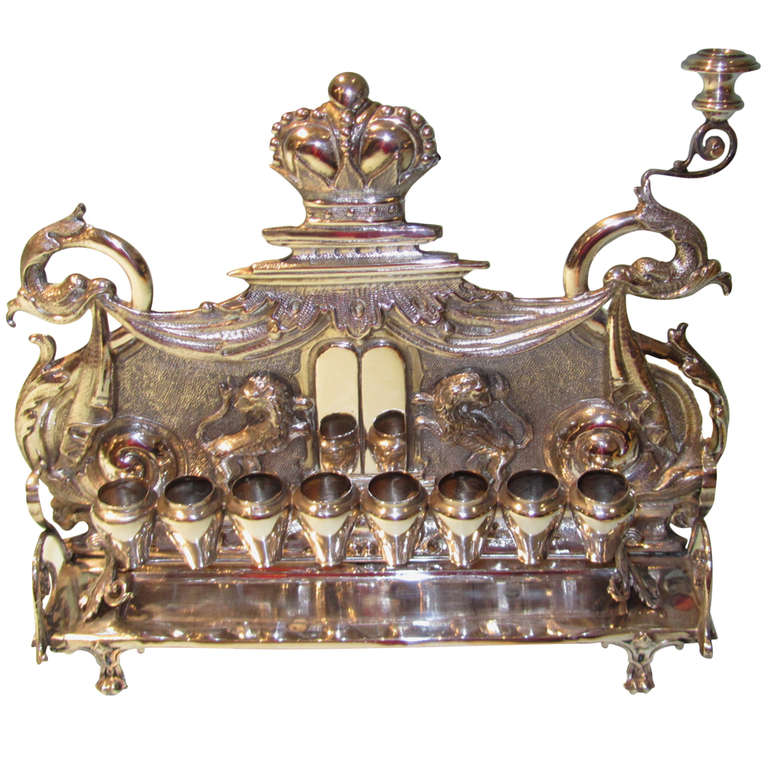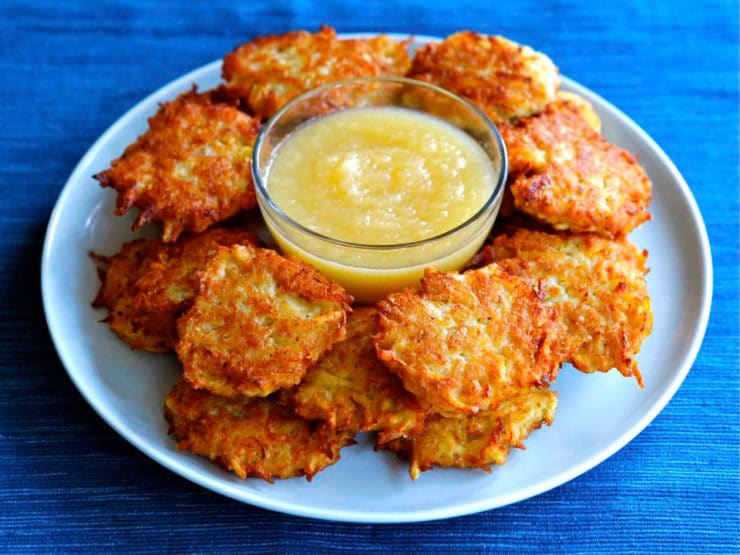 |
| An Eastern European silver Hunukkiah. |
While Christians in Eastern Europe were celebrating St
Nicholas Day and Christmas, Jews celebrated Hanukkah, known as the “Festival of
Lights.” Hanukkah, a festival
lasting eight days usually occurred in December. The holiday is based on a historical event, the liberation
of Israel from the Syrian Greeks in 164 BCE (I am using the abbreviation for
Before the Common Era, an alternative to the older BC or Before Christ).
 |
| The composer Handel wrote an oratorio about Judas Maccabee. It is often performed during the Hanukkah season. |
Antiochus IV Epiphanes, the ruler of the Syrian Greeks, began
to harden his rule of Israel, defiling the Temple in Jerusalem and banning the Jewish
religion and requiring the Jews to follow Greek cultural practices. The Maccabees, a group of Jews led by
Judah Maccabees and four of his brothers, sons of the priest Matthias, fought
for over three years to liberate and rededicate the Temple in Jerusalem. Because the victory happened during the
holiday of Sukkot, which happened in early fall, the Maccabees decided to
celebrate Sukkot after the Temple was rededicated, on the 25th day
of the month of Kislev, in the year 164 B.C.E. Since Sukkot is a seven day observance, Hanukkah used the
same time frame.
 |
| Painting by Auguste Dore, "The Victor, Judas Maccabeus" |
The story of Hanukkah was told by Flavius Josephus, a Jewish
historian, writing 250 years later, calling it the Festival of Lights. In the
Mishnah, the oldest part of the Talmud, written a century after Josephus, the
Festival of Lights became known as Hanukkah, (dedication in Hebrew) In the
Talmud, completed 600 years after the victory of the Maccabees, the story of
Hanukkah centered on the miracle of the jar of oil. Although the victory of the Maccabees over the Greeks was
unexpected, the fact that a jar of oil, containing enough oil for one day,
lasted for eight was considered miraculous. By this time, fasting and mourning were not allowed
during the Hanukkah festival.
A special candelabra, called a Hanukkiah was used for the
holiday. It had places for either
eight candles or oil pots, and one spot for the Chumash, a candle used to light
the others. At first, the Hanukkiah
was simple, but with time, they became more elaborate or fanciful.
 |
| Chocolate coins made in Israel by Elite. |
Hanukkah was a happy holiday, no work was allowed while the
candles burned, so that time was filled with games. Children played dreidel, a
small spinning toy, and adults played games of chance. Children were given coins as gifts on
the fifth day of the holiday, a part of this small gift was expected to go to
charity.
 |
| Old dreidel. |
Gelt remains today as foil covered chocolate coins. My father-in-law always gave everyone
in the family a dollar bill, announcing that it was Hanukkah gelt. Fried foods,
usually prepared using rendered goose fat were eaten all over
 |
| Sufganiyot, jelly doughnuts. |
Eastern Europe
during Hanukkah. In Poland, jelly doughnuts were the preferred treat, in
Lithuania, fried potato pancakes called latkes were favored. Cracklings, fried
crisp goose skin, called gribenes in Yiddish, were a special treat.
 |
| Potato latkes |
With the development of Zionism, Hanukkah took on a new
meaning. The idea of fighting for
freedom and for national identity became associated with Hanukkah. As Jews left Eastern Europe for
Palestine in the nineteenth and early twentieth century, often they had to defend
themselves. The story of Hanukkah
and the Maccabees was the story of freedom and liberty. The founding of Israel continued these
ideas. The Jews defeated the
Greeks in 164 BCE, because they were deprived of their religion and identity.
The Holocaust raised the same issues of oppression, religious freedom and
cultural identity that Hanukkah did two thousand years ago.
 |
| Celebrating Hanukkah in the Lodz Ghetto, World War Two. Source: Yadvashem |
I have not been blogging for the past few weeks, since my brother was very ill and passed away on November 16, 2014. he suffered from leukemia and developed acute myeletic leukemia.He was a great brother, and had many friends. I miss him.
 |
| Pete and me, January 2012. |










No comments:
Post a Comment